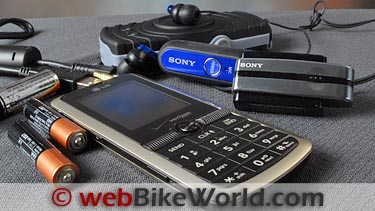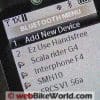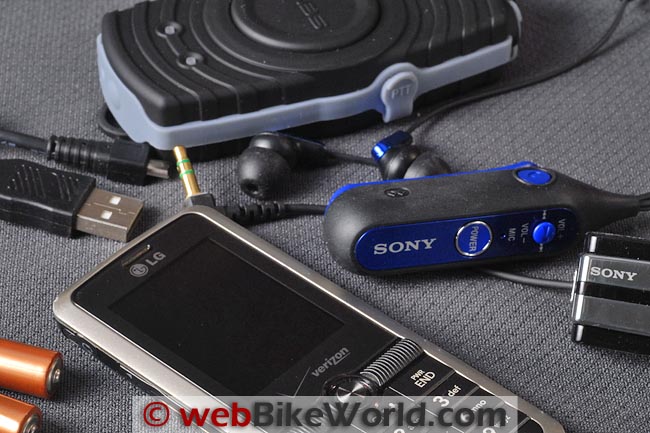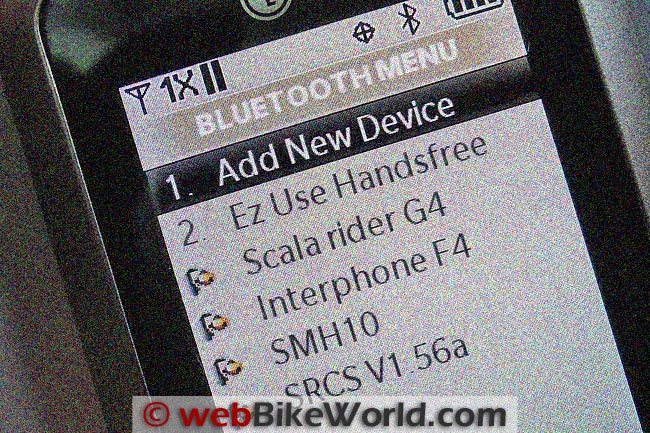Time and technology continues to march on and to survive, a technology like Bluetoothhas to evolve, expanding its horizons.
Through iterative and progressive version specifications, Bluetooth has and is responding to the challenges and opportunities.
The technology is now more widely recognized and supported than at any other time in its relatively short history.
Most Bluetooth-based motorcycle communications headset systems use only a small slice of the capabilities provided or supported by Bluetooth.
But there are still a lot of “take-aways” from the various Bluetooth versions and as the motorcycling industry adopts more wireless technology, leveraging the functionality found in the latest versions is likely to happen.
These “take-aways” — especially those related to power management, device connectivity and data or link capabilities — will continue to be implemented as enhancements to Bluetooth processors and systems.
This will provide additional capabilities and performance improvements to the motorcycle helmet communications systems we now almost take for granted.
Bluetooth was originally designed as a “wire-replacement” or wireless communications protocol with low power consumption and short ranges; a capability deemed ideal for portable equipment and its intended uses.
Users will know that as a radio frequency or RF technology, Bluetooth communication is optimized when a clear line of sight is provided.
It is impacted by many factors, which can typically be summarized as design attributes; power requirements and implementation; the antenna; environmental issues (electrical and natural); and of course, distance.
Per the established standards and guidelines for Bluetooth, manufacturers use one or more of the established Bluetooth power classifications for the Bluetooth components in their systems:
Class 1: 100 mW maximum, dBm of 20 and a range of ~100 metres.
Class 2: 2.5 mW maximum, dBM of 4 and a range of ~10 metres; and
Class 3: 1.0 mW maximum, dBM of 0 and a range of ~5 metres.
As with many RF systems, actual ranges can sometimes be extended between devices that use different output power; for example, a Class 2 device (2.5mW maximum) connected to a Class 1 (100mW maximum) device.
The advantage of this type of “mixed” environment is provided by the (typically) better sensitivity and higher transmission power of the Class 1 device.
Bluetooth v2.0 or 2.1 (With or Without Enhanced Data Rate)
Most current Bluetooth motorcycle helmet systems are based on Bluetooth version 2.0 or 2.1, with or without the Enhanced Data Rate (EDR) for faster data transfer.
One of the best outcomes from using Bluetooth v2.1 + EDR was the Secure Simple Pairing feature, now commonly implemented in motorcycle intercoms, that greatly improves the autonomic aspect of negotiation and pairing between disparate devices.
Inherent with this feature is the fact that for many users, particularly in a cluttered Bluetooth environment, their devices will broadcast continually and either pair with other devices or try to pair, unless the user(s) have configured their devices to prevent this.
Thankfully, along with the simplified pairing came increases in the use and strength of security.
Bluetooth v3.0
I haven’t yet seen or heard of a Bluetooth version 3.0 helmet headset yet and in reality most of the key features and enhancements defined are not directly applicable, at least right now, for the typical Bluetooth motorcycle communications system.
But having said that, some of the services provided by Bluetooth saw further refinement.
One in particular — “Enhanced Power Control” — could provide benefits in that headset power output switching would be faster; something that would help mitigate link loss issues between paired devices.
Bluetooth v4.0
The evolution of Bluetooth continues with the Core Specification for this version including “Classic Bluetooth, Bluetooth High Speed and Bluetooth Low Energy” protocols.
“High Speed” is based on WiFi, whereas “Classic” consists of the legacy Bluetooth protocols that are so familiar to motorcycle system users.
What does jump out is “Bluetooth Low Energy”. This subset could provide very tangible benefits regarding power management (active and idle), device discovery, and data transfer (link) requirements.
If implemented in low cost chips and used in compact and highly integrated devices, like the motorcycle Bluetooth headsets we use, greater performance would be realized.
Other inclusions under the latest Bluetooth specification might also be applicable in providing a common subset for wireless power management and communication systems interfaces as convergent services.
While I can’t say right now if adopting Bluetooth v4.0 or subsequent specifications for motorcycle headsets will be a near or mid-term industry effort, the specification, with variations, has and is being implemented by major chip suppliers and these suppliers see their products used in Bluetooth helmet systems…
Time and technology marches on, hang on for the Bluetooth ride!
Publication Date: November 2011
Owner Comments and Feedback
See details on submitting comments.
From “J.C.” (November 2011): “You guys are doing a great job explaining these systems but since they’re complicated, expensive and interim, I keep waiting for the next generation – or the one after that.
I’m pretty sure that the ultimate Bluetooth solution will be simple to use and operate with only a minimum of parts and controls and without wires. Wasn’t Bluetooth supposed to eliminate wires anyway?
I’ve been dreaming of a system that allowed me to use custom earplug speakers and one advantage of the Sena system is that the user can attach custom earplugs speakers or earbuds directly to the unit on the helmet — so that’s one choice.
My consumer fantasy system would eliminate the helmet (module). A control unit on the handlebars or dash would link all devices and functions (cellphone, mp3 player, GPS, intercom, etc.) wirelessly.
The earplug speakers would have their own Bluetooth pickup and a throat mike. Functions would be controlled by voice. Heck, let’s add in the ability to change the visor darkness and heated grips by voice. Beam me up!”
From “E.Y.” (October 2011): “One thing I still haven’t seen addressed is my biggest complaint about Bluetooth intercom systems: their (intentional!) lack of inter-operability between different brands.
I have the Sena SMH10 (the new one, thanks to their exchange program). My riding buddies have two different models of Cardo Scala systems. None of us can talk to the other, aside from making a cell phone call, which seems a bit ridiculous when we’re riding 20′ apart (or when we’re outside cell coverage).
I can pair my Bluetooth iPhone to the Motorola hands-free device in my car, as well as to an old Nokia headset I had lying around. And to my zümo. And a Sony speaker system.
Five different manufacturers, no problems pairing up. But try to pair a Sena to a Cardo? Or a Chatterbox? Forget it.
Why can’t the various Bluetooth intercom manufacturers get together and agree to a common “intercom” standard? Surely it can’t be that difficult.
Or is it, as I suspect, simple greed that is once again taking precedence over what would be best for consumers? (e.g., the childish “If everybody doesn’t buy my intercom, then nobody can talk to anybody!”).
I like my SMH10. But I don’t know how many times I’ve wished I could just initiate a chat with a co-rider as easily as I can call a friend’s Blackberry from my iPhone.
If the cell phone giants can figure out how to be inter-operable, why can’t motorcycle intercom manufacturers? Or do they just not want to? Thanks for the great site.”
From “M.E.” (October 2011): “I thought Garmin would be the ones to introduce a Bluetooth communication hub first; they’ve had all the technology needed in other devices for some years now and much more.
For instance, the Garmin Rino for bike to bike communications including GPS and the ability to see where other riders in range are on the Rino’s GPS map. The Zumo for Bluetooth connectivity and music playing.
The Garmin mobile XT’s ability to show the other persons mobile phones position on your phones map and route to it.
All clever stuff and all available in various devices and apps, Garmin just need to pull it together for an unbeatable bike device.”
From “R.G.” (October 2011): “I’m hoping the industry heads towards a system much like your entertainment system at home.
You have a box that your DVD, Blue Ray player, etc., connects to and then the box transmits that signal to a display unit or in this case a Bluetooth headset. The headset would be just like having wireless headphones for your home system. It would also have an intercom feature.
The box would be mounted somewhere easily accessible and you would pair or plug in other devices like cell phones, radios, music players, other headsets, etc.
The box would have glove friendly controls, long battery life or plug into the bikes electrical system.
Headset battery life would hopefully be 16-24 hours and if not have the ability to charge off the bikes electrical system. Thanks for an excellent Website.”
Editor’s Reply: Hmmm…sounds like you are describing the new Sena SR10 (review)!






